Does your company try to cheat your customer?
Is it because you think they won’t notice? Or do you believe that enough people are willing to buy your brand for the first time, that you don’t need to worry about getting that second purchase?
Either way, you haven’t heard that the most important attribute a brand needs to build is trust!
With so many purchases being made online these days, there is a growing number of articles exposing the behaviours of organisations that obviously haven’t adopted a customer-first strategy. Companies who still think it’s OK to try to attract customers and entice people to make that all-important first purchase, with less than honest promises.
I know that this has always been the case in some industries and companies. Brands try to convince people that what they have to offer is exactly what their potential customers need – even when it isn’t. However, in today’s socially connected world, it surprises me that many organisations continue to believe that they can “get away with it” whatever “it” might be!
Perhaps they are not aware of what they are doing. Perhaps they think no one else will notice. Whatever the reasons for such practices, I thought that it is once again time to call them out with some new examples of the more common behaviours. Some of them are even from large global multinationals who should know what they are doing! Such a shame – but it does make for some fun reading!
Dishonest labelling
In many cases, packaging is the first personal contact a customer has with a brand. Whether in advertising or on shelf, based on what they see, people will quickly decide whether or not your brand is worth investigating further. If so, they will read on, or if in-store they will pick it up and read the label, perhaps comparing it to competitive brands.
Here are some examples of the different tricks some brands play in the hope of attracting that first purchase. However, these tricks will only lead to a disappointed purchaser and will rarely lead to repeat purchases.
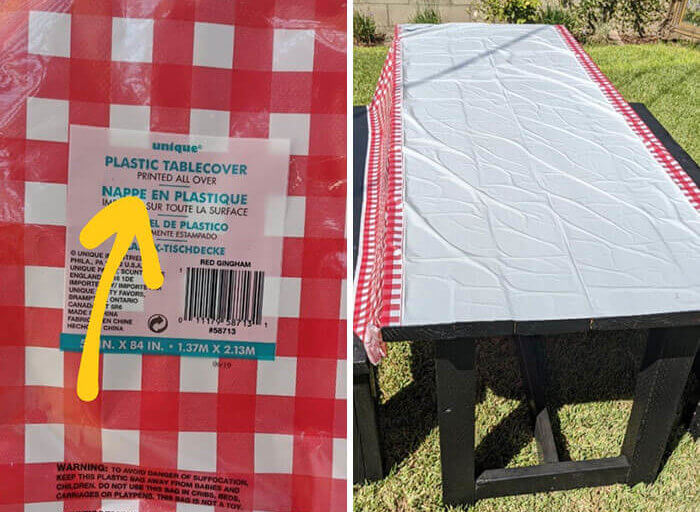
I know we’re currently in Winter in the Northern Hemisphere and most of us are in lockdown, but we are certainly already dreaming of the day we can get back out and enjoy family bar-b-qs.
And many of us will want a bright and happy design covering our table. This tablecloth looked perfect in the pack, but despite saying it is printed all over, the design is only on the border. It is packed so that only the design shows, so most would never even read the back of pack.
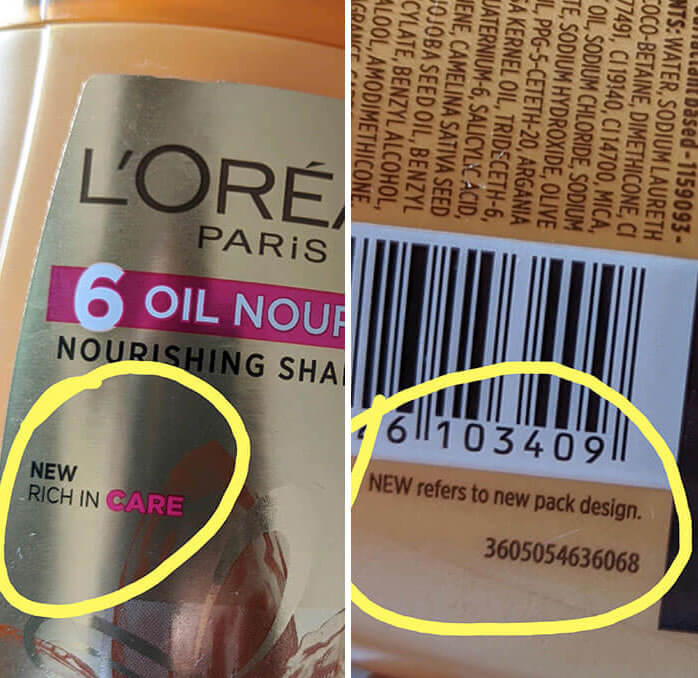
I’m a big fan of L’Oreal and regularly get drawn to their new products. Again I wouldn’t have checked the back of pack to understand the meaning of the word “new” printed on the front label, would you?
Obviously we need to pay more attention to what is written on packs as in this case, it is the pack design, not the contents that are new.
The fact that the word appears just above the “rich in care” claim makes it obvious that L’Oreal were not trying to avoid any misunderstanding by their purchasers. How would you feel when you got the bottle home and found it was exactly the same as your current pack? Disappointed, angry?
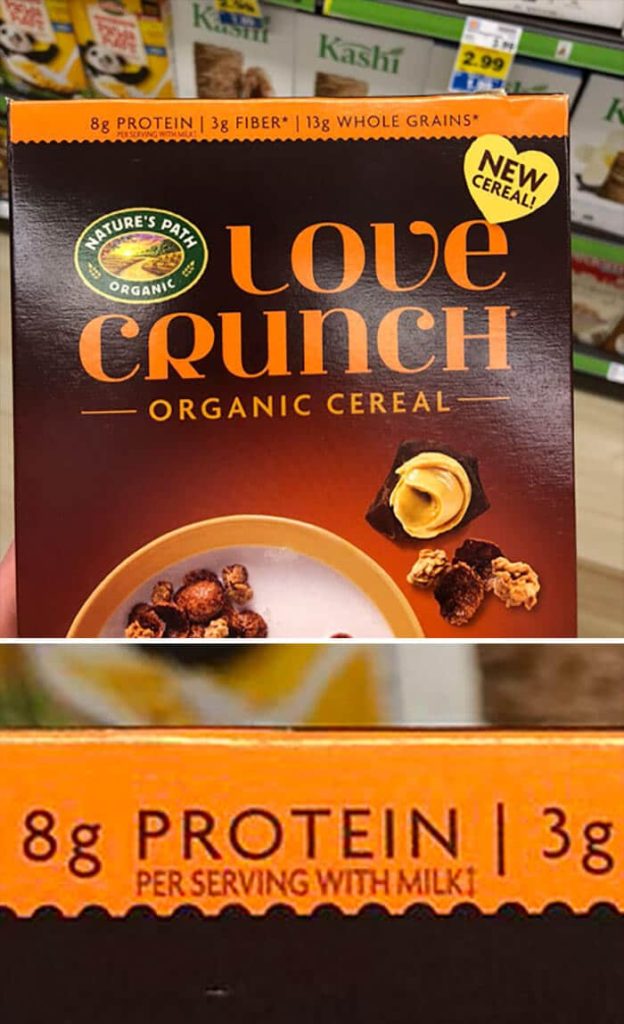
As with the previous example, a quick read on shelf of this cereal box and you would believe that the contents are high in protein. It’s from Natures Path too, so you would probably think that it is all-natural and therefore trustworthy (well I for one trust nature).
Look again. The protein claim is for a serving and is primarily coming from the milk you add! Remember, never believe what is printed on the front of pack!
Dishonest packaging
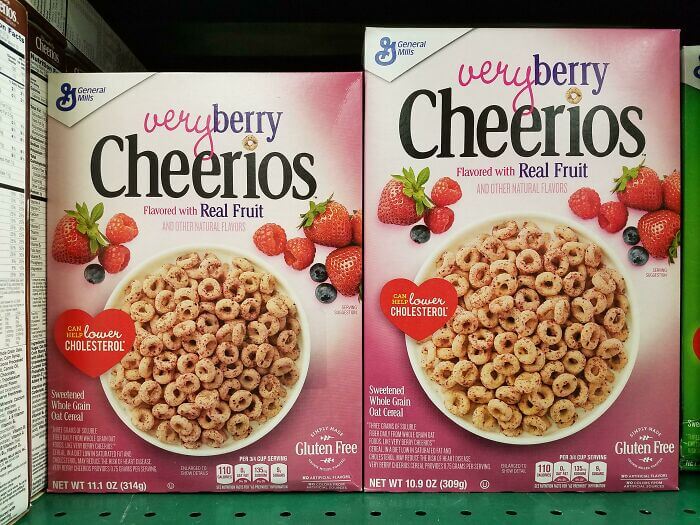
The second cereal example, this time from General Mills, is wrong for several reasons!
Firstly they have made the pack bigger – but the contents smaller! No doubt they wanted more shelf impact, judging from the competitor packs you can just make out on the left of the photo, but they decided to get a price increase too by reducing the quantity of the contents.
In a time where consumers are asking manufacturers to be more responsible, such as making less waste in their packaging, General Mills is going in the opposite direction!
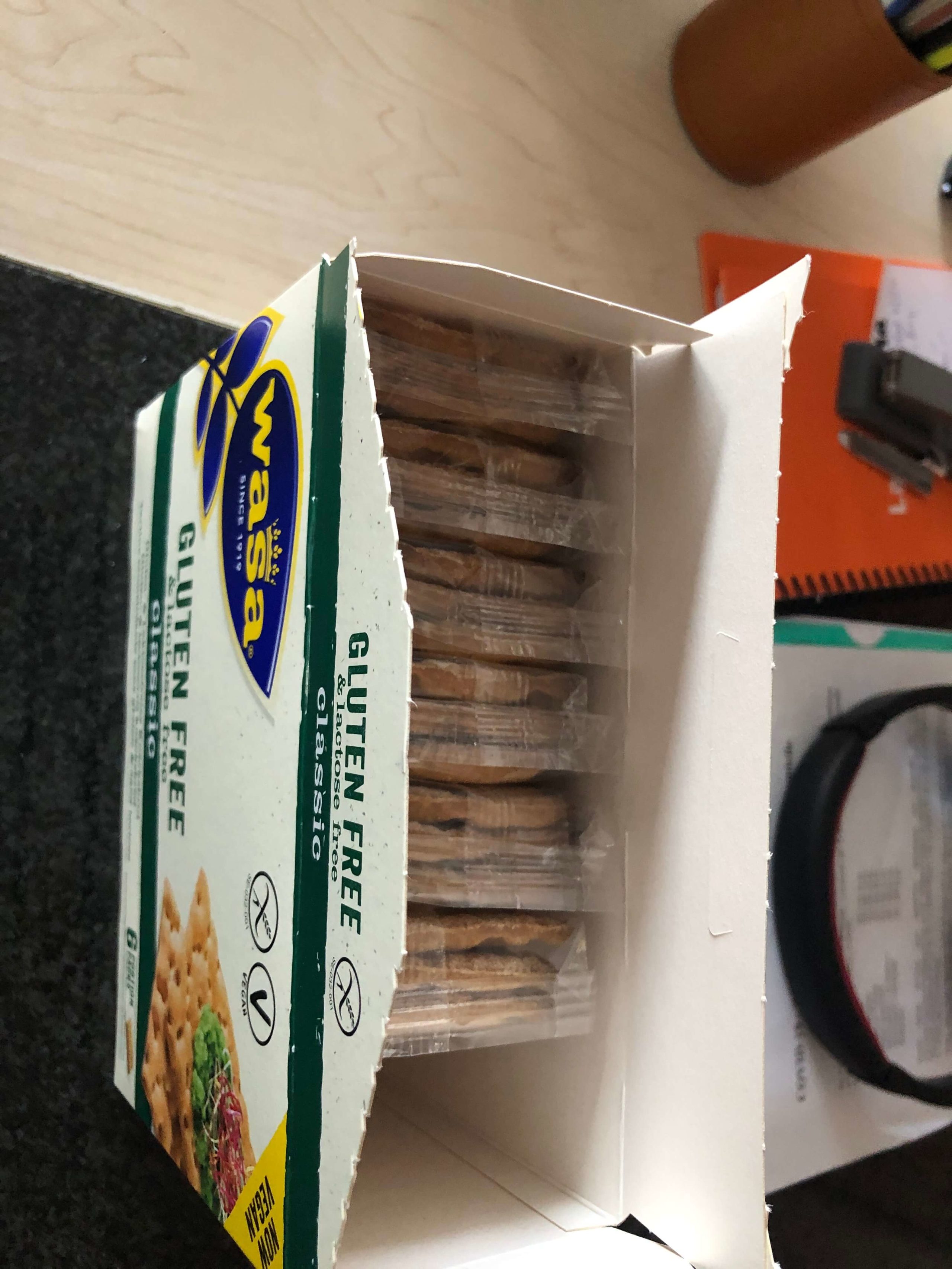
The next packaging example was one I found when opening my usual brand of crispbread.
At some point, they must have reduced the content without my even noticing, as I usually transfer them immediately into a hermetic box to keep them fresh once opened.
I know that cereal boxes do not appear to be filled when we first open them, but we have come to accept the explanation that the contents have settled during transport.
No such claim can be made for biscuits. This is just one example that I found, but unfortunately, it seems to have become the norm in the industry in recent years.
The final packaging example comes from the beauty industry, where misleading packaging seems to be the norm, at least from my own experience.
From tiny bottles packed in large plastic holders and huge boxes to bottles that contain minuscule amounts of product compared to the container size, that manufacturers seem to think is acceptable.
If everyone is doing it, the customer knows, right? Wrong! We may see the quantity printed on the box but most of us can’t assess how much that really is.
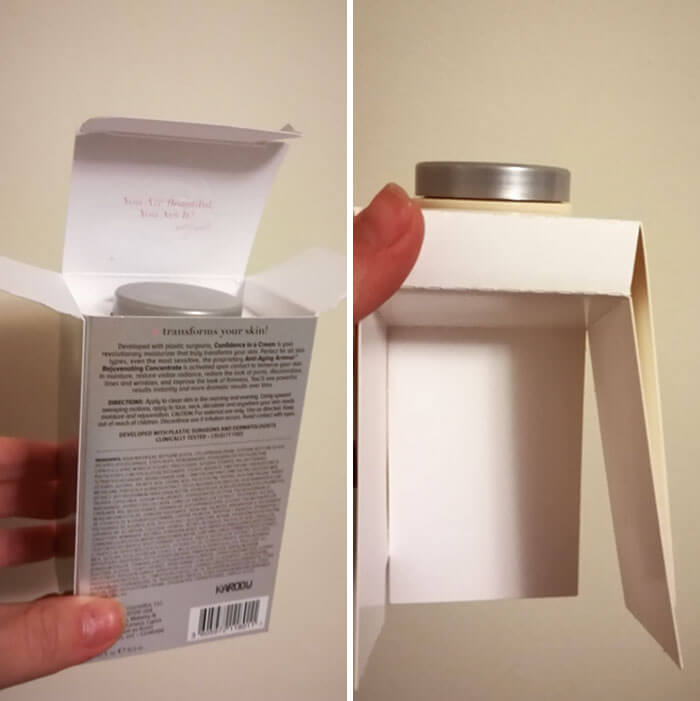
This example on the right is so ridiculous I can only suppose the manufacturer wanted to get more impact on-shelf for his tiny product. It’s still totally unacceptable.
Dishonest promotions
We all love promotions and price-offs, don’t we? Well, it looks like we should be paying a little more attention to the shelf edge labels, judging from the examples below.

I find this one on the left almost laughable because it is so clear!
I took the photo in a 99p store in the UK, where everything is 99p – dah!
So why bother to pretend this is a discount from the regular price of – 99p?
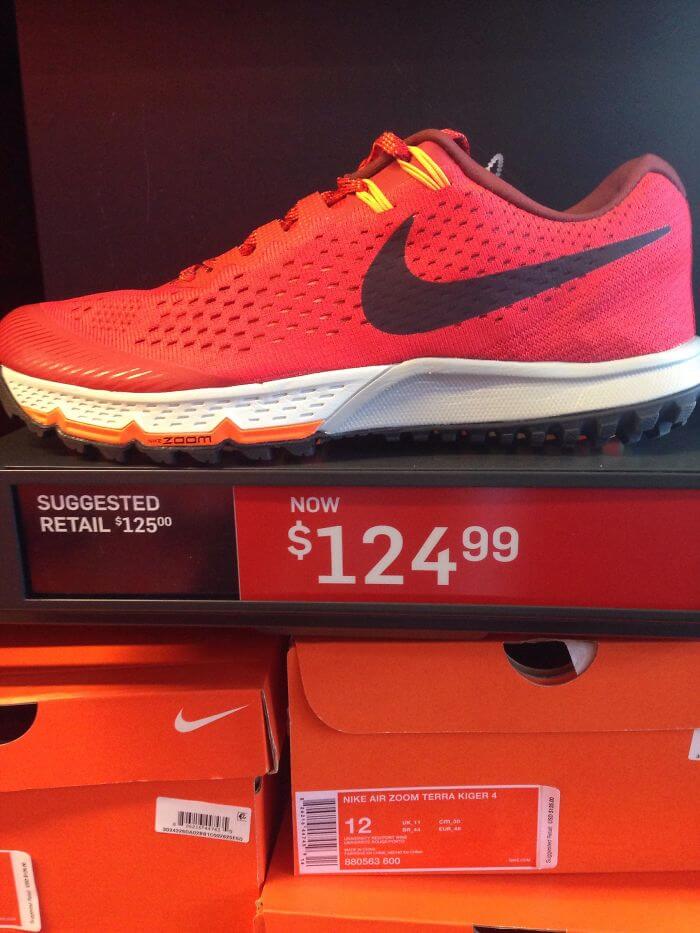
The Nike shoe “promotion” shown on the right is not much better, it’s plain cheating by the store (which is certainly not the brand’s store I must add).
The “NOW” price suggests that it was more expensive before. Well, it should at least in my opinion. In this case, it was indeed cheaper – by exactly one cent!
Not sure that qualifies for a “NOW” shout-out on the shelf edge label, unless you are trying to make buyers believe they’re getting a good deal.
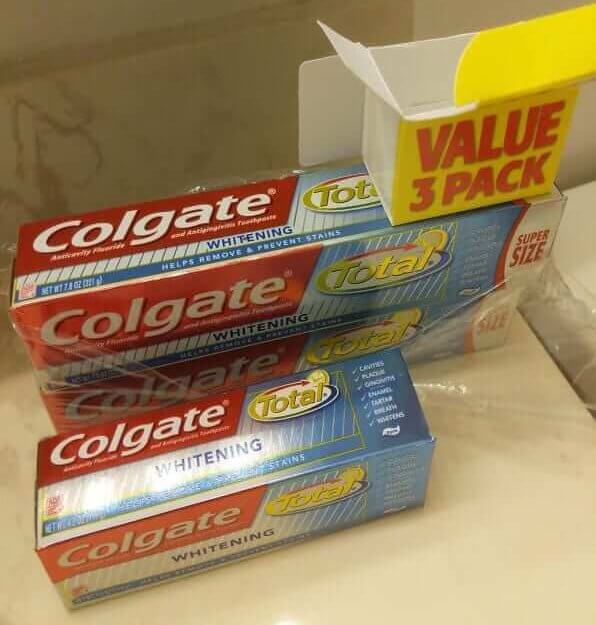
It is true that this Colgate offer on the left doesn’t actually say the three packs are of the same size, but purchasers should be forgiven for understanding it in this way – and no doubt that was the intention!
As I mentioned at the start of this article, it is so, so sad that even large and usually trusted multinationals are stooping to such low levels to get more money out of their most loyal customers. Well, at least they probably were loyal until they bought their cheating promotions!
Dishonest ratings
These have been in the news so much recently, especially online. From restaurant and hotel reviews on TripAdvisor to product and delivery stars on Amazon, we all know to pay attention to just how many people voted to get the scores.
It is also a good idea to review the top and bottom scorers for the similarity of comments and believability. They could have been placed by the sellers or their competitors, so never base your purchase decision on just the overall rating; check the details.
Another area that has come under scrutiny in recent years for false ratings is the car industry. Many (most?) of them have been called out for false consumption claims which resulted in them getting a lower pollution score. Hopefully, most if not all these fake numbers have now been replaced by more honest ones.
The scandal started with Volkswagen AG admitting to engineering its diesel vehicles to cheat on emissions testing. Then Ford joined the list, with drivers in a U.S. lawsuit claiming that 500,000 Super Duty pickup trucks had also been rigged to beat the emissions tests.
And other European car makers are no better. German manufacturers have been accused of operating a 20-year “cartel” to impose a premium on consumers while stifling innovation, including pollution controls. Bloomberg has a good article explaining the topic if you want to learn more.
Dishonest products
I believe that this is rampant in the food industry in particular, although I am not sure the outlandish promises (and packaging as shown above) of the beauty industry don’t warrant a mention here too!
From enticing images on (front of!) pack, to the disappointing contents, we are regularly shocked by just how far from reality the product photos are. Here are a few of the funniest ones I’ve come across.

The first example is from the Morrisons supermarket chain in the UK. I think by triple pepperoni they meant the three slices of meat! At least that is what you get on your pizza (no sorry there are four if you search for them!). What did you expect for one pound fifty?

The next one on the left is more subtle. It does say it’s solid chocolate and that’s true. It’s just that you only get half a cup, not the whole one I bet purchasers were expecting.
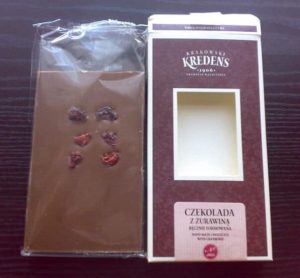
The third food example is also from a chocolate manufacturer, who takes cheating to a whole new level.
See the photo on the right; it must have been a manufacturing nightmare to position the cranberries precisely so that they are seen through the transparent section of the packaging!
Oh wait, I just saw it says it is “handmade” so the six cranberries were carefully placed on the tablet! Maybe that’s how they could use the claim, after manufacturing the chocolate tablet by machine.
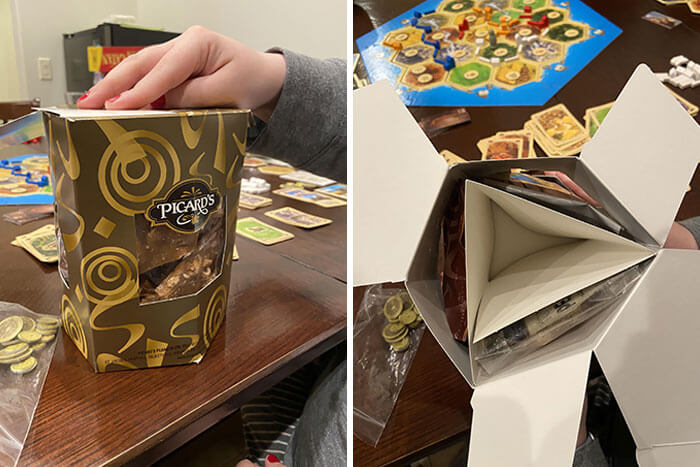
The final example on the left makes me wonder how any marketer could accept to do such a thing to their customers?!!
Apart from the excessive cardboard used, it is clear that the intention was to cheat the purchaser into thinking he/she was getting far more than the actual contents of the pack.
Dishonest pricing

The “promotion” for cheap parking on the right only becomes less of a bargain as you are probably driving into the car park and see up close the “for 10 minutes” in tiny font at the bottom of the panel.
They will only get your business once, if at all and I bet you’d warn your friends and family not to park there.
Many of the dishonest promotional packs mentioned above would also qualify as dishonest pricing. But one common practice on pricing that is beginning to irritate me, is to use of the words “up to” usually in small font compared to the large font used for the discount being offered.
We come across this and the BOGO (buy one get one) offers frequently. BOGO started its life as BOGOF (for free, making the two products 50% cheaper) and I believe that many people still interpret the message as such. I think buyer beware should be the new norm when being promised such discounts. I myself make a point of ignoring them because I know I will always be disappointed with the actual offer, compared to my first interpretation of it.
Dishonesty online
I couldn’t finish this review of companies and brands that cheat the customer without mentioning some of the dishonest online practices too.
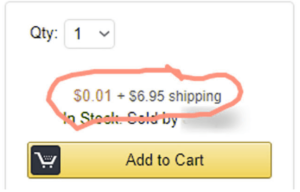
These include offering something for free and then charging “only for shipping and handling” which is usually more than the item is worth!
And asking for credit card details at the time of a free trial. This is no doubt in the hope that many people will forget to cancel before their trial runs out and get locked into the purchase of a product or service they perhaps hadn’t intended to buy.
I am happy to see that some brands are now offering trials without requesting credit card details, or are sending out a reminder before the end of the trial to remind their (potential) customers that they will be charged if the service is not cancelled before a certain date. Well done to those customer-centric brands for their honesty.
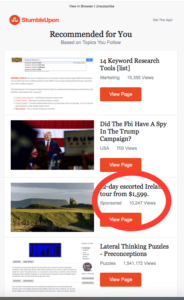
Another habit that is becoming prevalent, even on Google, is the blurring between search results or newsletter topics, and advertising.
The example on the right comes from an email I received a while back from StumbleUpon (now called Mix).
I had been such a fan of theirs for years, as they had always suggested interesting articles I might not have found otherwise.
This new attempt of theirs to “hide” advertising amongst their list of suggestions irritated me immensely because they made it an integral part of the list.
I cancelled my subscription as soon as I noticed it and wonder if others did too, as they have since changed names.
At least Google does add lines, albeit very light grey ones, in their search results.
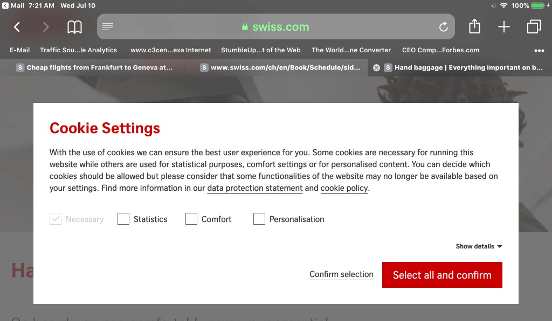
One more example of cheating online is the usage of a bright colour to entice surfers to click a button when it is not the option they would have chosen, had they had bothered to read the text (which we don’t do any more, we just skim read).
In the example on the left from Swiss (and also used by their parent company Lufthansa), readers would be drawn to click on the red button to approve the cookies. However, to accept only the required ones, you would need to click the word in light grey to the left of the red button.

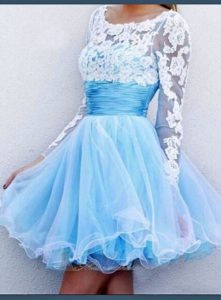
Finally, and probably the most rampant of all cheating these days, are the online clothing scandals.
Many articles have been written that compare the article ordered and the rip-off Asian copy received. Here is just one example, but you can see many more at MailOnline.
Definitely worth a laugh, but I do feel sorry for the girl who ordered it, although as she posted her photos on Facebook, I think she saw the funny side too.
There is no way that this builds loyal customers, but perhaps in China (from where most of these sites seem to be doing business) the population is so huge that they believe that they can keep this going a few years until they can improve the quality of their copies!
And for those of us who have purchased such merchandise, the hassle and cost of returning such an article after waiting weeks to receive it, is just not worth the effort and we move our purchasing elsewhere.
The solution(s)
None of the above examples would happen if organisations adopted the use of my “Magic” question. What is it? It is simply to ask yourself every time you take a decision:
“What would our customers think of the decision we’ve just taken?”
If the answer is that they wouldn’t like it, then the decision needs to be reconsidered.
I hear some people (Jeanne Bliss’s book for example) asking “would be mother, sister, girlfriend like it?” If you prefer that way of thinking, fine by me – just as long as you reconsider your decisions in light of these questions. If you wouldn’t do it to your friends and family, why do it to your customers? They are members of someone else’s family after all.
Another solution, of course, is just to be more honest.
So to end on a (relative) high, here are a few examples of businesses that “tell it like it is.”
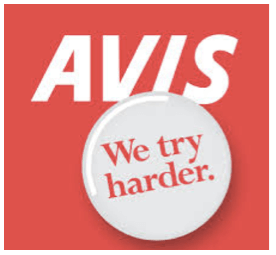
One company that has benefited from telling the truth – and there aren’t that many! – is Avis.
Their “We try harder” campaign launched in 1962, turned into a strategy for the whole business – and took Avis from an 18% market share to 34% in a very short time.
More than fifty years on, it’s still their slogan. (That in itself is amazing: how many brand ideas last fifty years?)
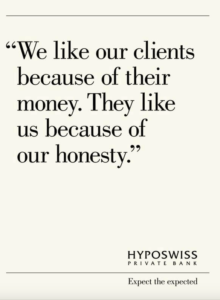
Another example of an honest company, is, perhaps surprisingly, from a Swiss financial institution Hyposwiss. In their “honest campaign” they take a refreshing view of money – yours in particular.
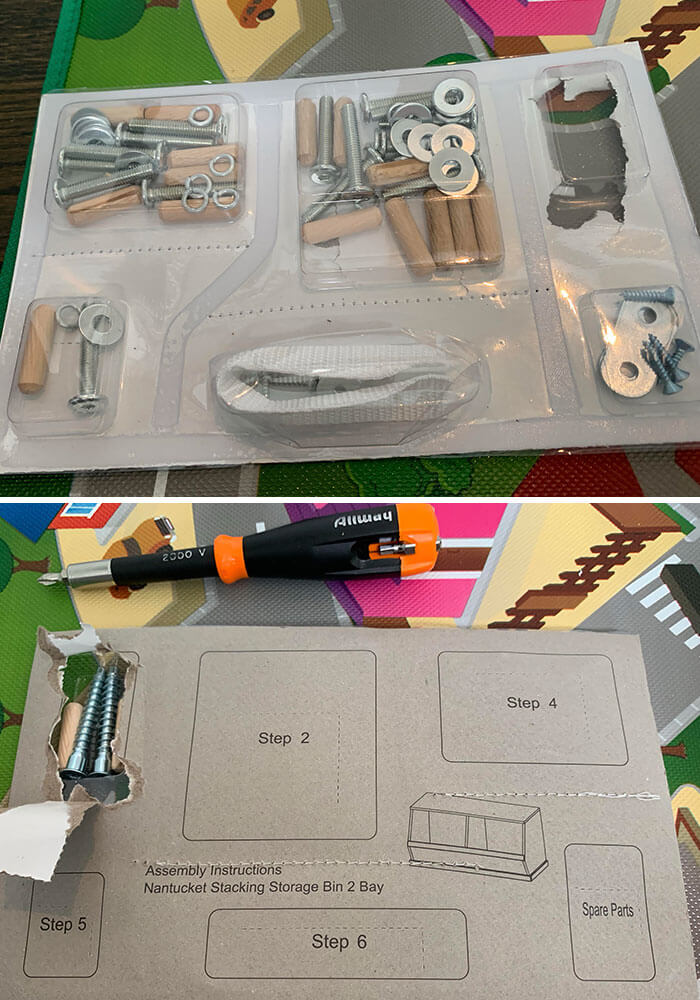
The last couple of examples are exceptionally customer-centric.
I just love it when companies clearly have put themselves in the shoes of their customers and found small but impactful ways for people to fall in love with their brands and the solutions they offer.
The first on the left is to help customers when they have to build the flatback furniture they bought. Ikea could learn a thing or two from this hardware store. I am sure many of us would pay extra for this added convenience.
Although I used to build my flatpacks myself when I was (much) younger, I am afraid with age I have given up. But making it this easy might just tempt me to have another go. You too?
I recently heard that Ikea will be offering spare parts, not just missing nails and screws, so their buyers don’t have to replace the whole article if something breaks or wears out. They say they are doing this for sustainability reasons, but I’m happy they are also showing that they listen to their customers.
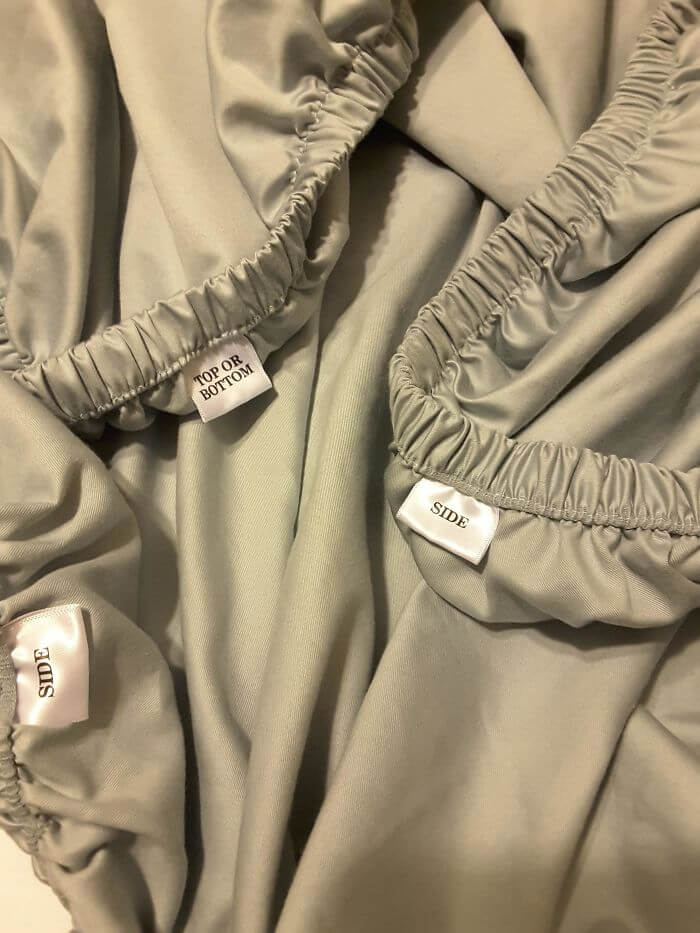
On the right, is a photo of another simple idea, but one that would save every bed-maker both time and frustration. I always have to compare the two lengths of a fitted sheet to know where the top is!
As I already said, putting yourself in your customers’ shoes will highlight many ways you can make their lives easier. This example is in reality a tiny advantage, but one that would tip the balance when buying fitted sheets for many people.
That is the key to customer-centricity; making your customers happy to pay more than the cost to you of adding a feature because they value your solution, as well as your attention and understanding of their needs.
I hope you enjoyed this post but also got some useful “ah-ha” moments when you realised one of your brands did in the past, or is currently doing, something your customers won’t appreciate.
In today’s digital age, there is no longer the opportunity for companies that cheat to hide for long. They will always get called out on social media, eventually. If not today, then tomorrow or next week. Be warned!
Do you have any other examples of a customer-centric idea, perhaps from your own brand? If so, then please share it below and let everyone know.
Would you be interested in an audit of your brands to make them more customer-centric? Then we should talk; you’ll be surprised how quickly and cheaply it can be done. And you go away with at least three ideas to action immediately.







